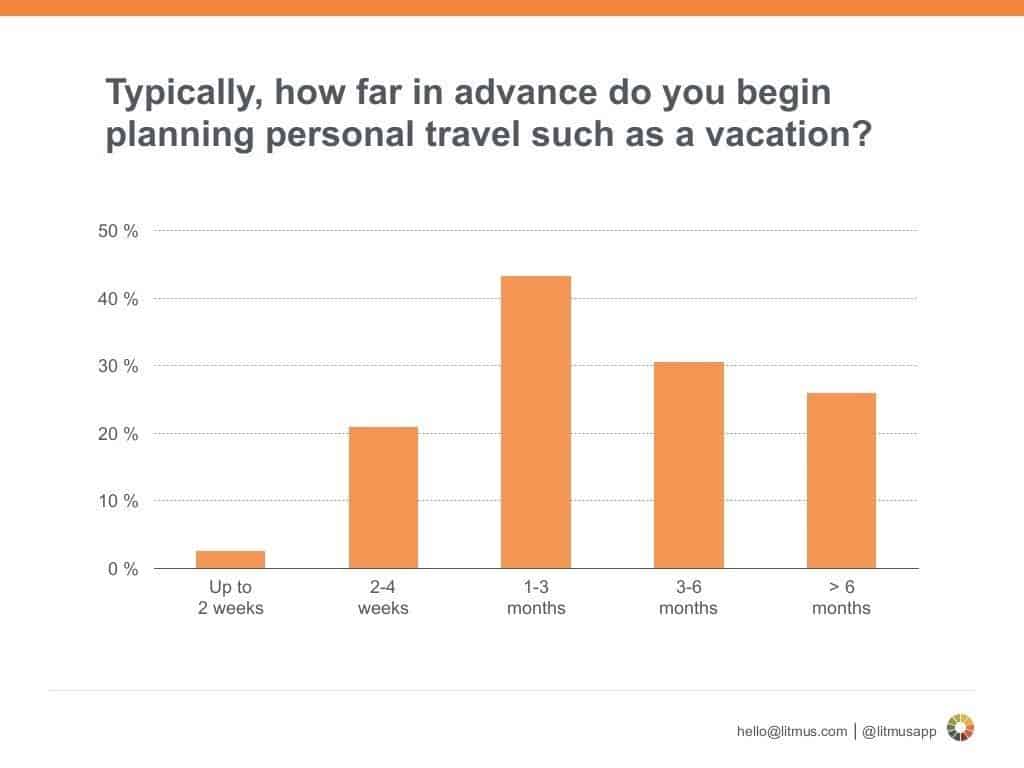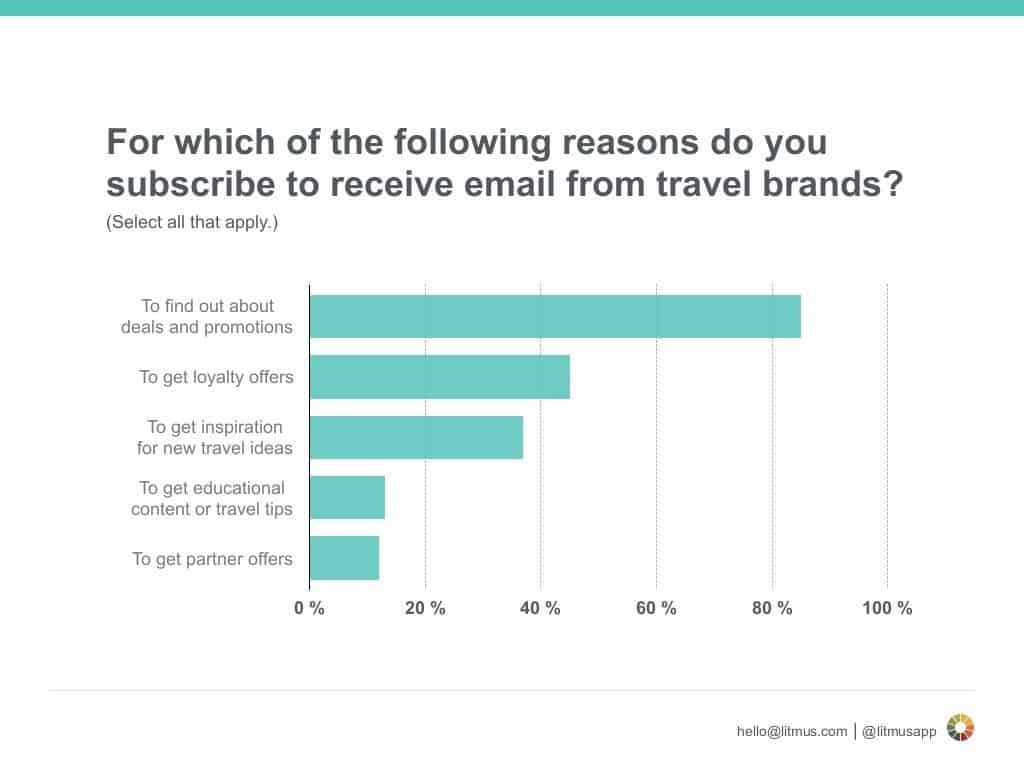Most of us are constantly daydreaming about our next city break or holiday.
Let’s be honest, you’ve probably thought about it at least once today. It has been proven that having the travel bug can improve your problem–solving abilities and help you be more creative, with some arguing that it can also lower your risk of heart disease and even help make you smarter! Sign us up…
It will come as no surprise, therefore, that in 2016 alone the travel and tourism industry contributed over 7.6 trillion dollars to the global economy. These stats, combined with the fact that email remains your best channel for ROI, your email marketing strategy needs to be on point for the summer season. As such, we thought we’d provide you with a few tips and tricks to consider.
1. Test… Test… Test … and when you’re done, go and test some more!
At Adestra we’ve always been the biggest advocates of testing. While we would love to be able to provide you with the recipe for success that works across all industries, brands and customers, that formula does not exist. Each industry is different, each brand has its own KPIs and each data set is unique. You must find out what works for your customers and what will get them excited about your message. The only way to this is by testing. Go beyond subject line testing and try to find out the best day or time of day to launch your email, discover what layout is most effective, what content your clients prefer, and what incentives or offers will engage your customers. Celtic & Co did just that, gaining not only valuable insights but also an 84% increase to their click-to-sale rate.
TIP: In an external blog, our customer success manager Dannielle Woolley provided quick wins for testing within the travel industry.
2. It’s All About Mobile and Dynamic Content
New Litmus research has shown that 45% of consumers read emails from travel brands on their smartphones. Mobile-responsive emails have now become industry standard, yet another recent trend has been the use of kinetic templates, namely using dynamic elements within your emails. With the help of our design team, Air Charter Services created a great email that resulted in an interactive customer experience with a live ‘departures board’ available.
You could even go one step further, using third party technologies to personalize your emails based on point of open.
TIP: If a customer has recently booked a holiday, add a fun personal touch by letting them know how many miles they are from their chosen destination in your confirmation email.
Trick: Use dynamic or conditional content to inform customers of the weather conditions and live currency exchange rates for their desired destination.
3. Automate and Plan Ahead, Since Most of Your Customers Do
Litmus has revealed that, on average, travel planning starts 84 days in advance. Spontaneous customers think about their trips 30 days ahead, while long-term planners start their research 180 days prior to their trip.

This is where automation will help. From welcome series to nurture journeys, make sure your potential customer connects with your brand. Beachcomber created a welcome program that resulted in an average CTOR rate of 36% and a 15% increase in email-driven web traffic. The first email thanked customers for signing up and provided them with more details on the brand. After a four-day delay, the second email encouraged subscribers to explore destinations giving them additional information on each. After a one-week delay, the last email focused on detailed offers from four hotels in their portfolio. With open rates above 40% and CTORs above 30%, the most-clicked links in these emails were calls-to-action around booking.

TIP: It’s not always about the hard sell. Take your time and truly think about the length of your sales cycle. Automation will not only help save you time but ensure that the potential customer is in constant contact.
4. The Proof is in the Price
Getting the best price is the biggest motivator for customers signing up to travel emails. Use this insight to make the most of your welcome journey, using progressive profiling to gather more information about your subscribers, growing knowledge and therefore momentum and provide them with increasingly personalized offers.
TIP: Use countdown clocks to create a sense of urgency. Given the planning time frame and the fact that customers are going to compare offers and prices from multiple brands, that fear of missing out can help them make that decision even faster.

TRICK: A customer returning from holiday is most likely already planning their next one. Daffodil made the most of these post-holiday blues to introduce special offers to their customers after Christmas, resulting in 2500% ROI.
It comes as no surprise that reviews are at the basis of the decision-making process. Having shareable content and social proof are vital within the travel industry.
TIP: Populate your emails with content from review sites.
TRICK: Use email to generate even more reviews and gather information that you can share with possible customers.
5. We All Need a Reminder
81 % of people abandon online travel bookings after browsing and 53% abandon when they see the full price, yet 87 % said they would consider returning to the booking. Abandoned basket emails are therefore a must for the summer holiday season. Do also bear in mind that within the travel industry the decision-making process is usually a team effort, and the right reminder sent to the right person is more likely to result in a purchase.
TIP: Use product recommendations within your reminder email.
TRICK: Transactional history can help you present a customer with the most relevant offers to them, both in terms of destination and preferred dates.

